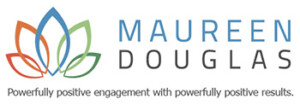There’s a saying, “If you can’t dazzle them with diamonds, baffle them with B.S.” But despite a push towards “plain language” that began with the rise of information-overload largely driven by the Internet, we see overly complex language and jargon continued in use today by both public and private sector organizations. And it directly undermines effective public engagement.
Here are three simple reasons not to baffle them with b.s.:
1. Fancy words can intimidate regular folks, or worse, make them feel stupid.
People don’t like to feel like they can’t keep up. Burying your message — or worse obscuring it, with $50 words is a surefire way to turn-off the majority of your audience. Most of us don’t reach for the dictionary when we stumble upon a word we don’t understand and it’s unreasonable to expect people to do so. No one likes to feel stupid.
2. People don’t like to feel like they’re not “in the club”.
The use of jargon — even if it’s standard terminology for professionals such as engineers, planners, scientists or policy makers — makes written communications difficult to digest. It results in your information reading like a foreign language written by “insiders”, making the reader feel like the information isn’t meant for the regular Joe.
3. Your readers’ time is at both valuable and limited.
People simply do not have the time to reread and decipher information that is not easy to understand on the first reading. Infographics, short paragraphs and fact- packed bullet points are the tools of today. Any professional communicator not using them is doing themselves, and their audience, a disservice.
In person public engagement, like a town hall or open house meeting, provides participants with the opportunity to ask questions, clarify positions and add information as necessary. But when we’re asking people to engage on their own time, by reading our written materials, that writing has to get the idea across clearly and succinctly. Plain language is the key to comprehension and participation.
Plain language is based on the idea that communication is most effective when it is clear and concise and easily understood by your audience on first reading. To test whether or not your materials meet the plain language standard put it through the following filters.
Materials are written in plain language if your audience can:
- Quickly find the information they need
- Easily understand that information
- Use that information to contribute an informed opinion or engage as requested
To help make your materials accessible and engaging, structure your written communications logically. Present the overview first and then drill down to into details:
Speak to the reader — Use “you” and other pronouns — it’s friendlier and will draw the reader in.
Simple words, greater effect — Don’t use a four-syllable word when a two-syllable word will do (although syllable has three syllables…hmmm)
Get active — Always write in the active voice, it’s more engaging. If you don’t know what that means, here’s a couple of sites to reference:
http://www.plainlanguage.gov/howto/quickreference/dash/dashactive.cfm
Less is more — Use short, easily punctuated sentences — no one has time for semi-colons anymore. Sorry semi-colon; it’s not you, it’s us.
Go easy on the eyes — Employ easy-to-read design features such as bullet points, quotes and simple infographics.
Often written materials are our first, and sometimes only, touch point in public engagement. The use of easy to read and understand language is often the most powerful tool you have for getting your message across. Using plain language can convey honesty and integrity and increase participation in public engagement. And when that happens, we all win.
~ Maureen Douglas
Sign up for the weekly “Truth Tuesdays” blog or for a daily dose of truth, click here:




